一、简述
滑动事件有多个步骤组成,它不是一个简单的事件,它需要多个动作来共同完成,滑动根据方向不同分为向上滑动、向下滑动、向左滑动和向右滑动。在现如今移动互联网和短视频等行业的迅猛发展,滑动事件大家都非常的熟悉,尤其是抖音、快手这些快餐式的娱乐小视频,一滑就停不下来。滑动事件基本上包含如下三个动作:
按下操作,并且不松开
移动操作,移动过程中不松开
抬起操作,移动结束后松开
滑动事件我们一般是针对整个屏幕的滑动,因此在这里我们给 Ability 最外层的布局 DirectionalLayout 设置滑动事件。
二、滑动事件实现
2.1 布局开发
直接创建一个项目,使用默认的 ability_main.xml 布局即可,初始内容包含一个 Text 组件,其内容如下:
<?xml version="1.0" encoding="utf-8"?><DirectionalLayout xmlns:ohos="http://schemas.huawei.com/res/ohos" ohos:height="match_parent" ohos:width="match_parent" ohos:alignment="center" ohos:orientation="vertical">
<Text ohos:id="$+id:text_helloworld" ohos:height="match_content" ohos:width="match_content" ohos:background_element="$graphic:background_ability_main" ohos:layout_alignment="horizontal_center" ohos:text="$string:mainability_HelloWorld" ohos:text_size="40vp" />
</DirectionalLayout>
复制代码
由于我们需要给最外层的布局 DirectionalLayout 添加滑动事件,因此我们先给这个 DirectionalLayout 添加一个 id 标志,等会通过 id 来找到 DirectionalLayout,注意 DirectionalLayout 最外层的布局它也是一个组件 Component,添加的 id 为 ohos:id="$+id:dl"
<?xml version="1.0" encoding="utf-8"?><!--id 添加在这里 --><DirectionalLayout ohos:id="$+id:dl" xmlns:ohos="http://schemas.huawei.com/res/ohos" ohos:height="match_parent" ohos:width="match_parent" ohos:alignment="center" ohos:orientation="vertical">
<Text ohos:id="$+id:text_helloworld" ohos:height="match_content" ohos:width="match_content" ohos:background_element="$graphic:background_ability_main" ohos:layout_alignment="horizontal_center" ohos:text="$string:mainability_HelloWorld" ohos:text_size="40vp" />
</DirectionalLayout>
复制代码
2.2 事件开发
2.2.1 通过 id 寻找组件对象
我们在 MainAbilitySlice 子页面的 onStart 方法中,添加通过 ID 定位组件对象的代码逻辑,如下:
// 通过id寻找组件对象// 1、找到布局对象DirectionalLayout layout = (DirectionalLayout) this.findComponentById(ResourceTable.Id_dl);// 2、找到文本对象Text text = (Text) this.findComponentById(ResourceTable.Id_text_helloworld);
复制代码
2.2.2 给 DirectionalLayout 布局添加滑动事件
我们给 DirectionalLayout 布局添加滑动事件,直接使用本类实现 Component.TouchEventListener 接口,重写 onTouchEvent 方法来实现,关于事件实现有四种方式,如有需要可以查看我的《鸿蒙开发》专栏,实现 Component.TouchEventListener 接口,重写 onTouchEvent 方法后,当滑动事件被触发时,就会调用 onTouchEvent 方法,我们直接在 onTouchEvent 方法实现滑动事件触发后的相关业务逻辑即可,修改后的代码如下:
package com.liziba.demo.slice;
import com.liziba.demo.ResourceTable;import ohos.aafwk.ability.AbilitySlice;import ohos.aafwk.content.Intent;import ohos.agp.components.Component;import ohos.agp.components.DirectionalLayout;import ohos.agp.components.Text;import ohos.multimodalinput.event.TouchEvent;
public class MainAbilitySlice extends AbilitySlice implements Component.TouchEventListener { @Override public void onStart(Intent intent) { super.onStart(intent); super.setUIContent(ResourceTable.Layout_ability_main);
// 通过id寻找组件对象 // 1、找到布局对象 DirectionalLayout layout = (DirectionalLayout) this.findComponentById(ResourceTable.Id_dl); // 2、找到文本对象 Text text = (Text) this.findComponentById(ResourceTable.Id_text_helloworld); // 3、给整个布局DirectionalLayout添加滑动事件 layout.setTouchEventListener(this); }
@Override public void onActive() { super.onActive(); }
@Override public void onForeground(Intent intent) { super.onForeground(intent); }
/** * 滑动事件触发后调用的方法 * * @param component 滑动事件触发的组件 -- 这里是DirectionalLayout * @param touchEvent 事件的类型,上面有说到三种按下、滑动、抬起,其实有更多 * @return */ @Override public boolean onTouchEvent(Component component, TouchEvent touchEvent) {
// 此处写滑动事件的相关逻辑
return false; }}
复制代码
2.2.3 滑动事件 onTouchEvent 方法具体实现
当滑动事件被触发时,会调用 onTouchEvent 方法,这里我们通过修改文本组件 Text 的值来展示滑动事件的效果,onTouchEvent(Component component, TouchEvent touchEvent)方法的两个参数传递分别代表:
TouchEvent 中包含事件的动作,我们通过 TouchEvent .getAction();即可获取事件动作的类型,在 TouchEvent 中定义类非常多的事件类型,这里会展示三种 POINT_MOVE、PRIMARY_POINT_DOWN、PRIMARY_POINT_UP
package com.liziba.demo.slice;
import com.liziba.demo.ResourceTable;import ohos.aafwk.ability.AbilitySlice;import ohos.aafwk.content.Intent;import ohos.agp.components.Component;import ohos.agp.components.DirectionalLayout;import ohos.agp.components.Text;import ohos.multimodalinput.event.TouchEvent;
public class MainAbilitySlice extends AbilitySlice implements Component.TouchEventListener {
/** 文本组件 */ Text text; /** 记录方法触发的次数 */ private int count_down = 0; private int count_up = 0; private int count_move = 0;
@Override public void onStart(Intent intent) { super.onStart(intent); super.setUIContent(ResourceTable.Layout_ability_main);
// 通过id寻找组件对象 // 1、找到布局对象 DirectionalLayout layout = (DirectionalLayout) this.findComponentById(ResourceTable.Id_dl); // 2、找到文本对象 text = (Text) this.findComponentById(ResourceTable.Id_text_helloworld);
// 3、给整个布局DirectionalLayout添加滑动事件 layout.setTouchEventListener(this); }
@Override public void onActive() { super.onActive(); }
@Override public void onForeground(Intent intent) { super.onForeground(intent); }
/** * 滑动事件触发后调用的方法 * * @param component 滑动事件触发的组件 -- 这里是DirectionalLayout * @param touchEvent 事件的类型,上面有说到三种按下、滑动、抬起,其实有更多,如下所示 * * public static final int CANCEL = 6; * public static final int HOVER_POINTER_ENTER = 7; * public static final int HOVER_POINTER_EXIT = 9; * public static final int HOVER_POINTER_MOVE = 8; * public static final int NONE = 0; * public static final int OTHER_POINT_DOWN = 4; * public static final int OTHER_POINT_UP = 5; * public static final int POINT_MOVE = 3; * public static final int PRIMARY_POINT_DOWN = 1; * public static final int PRIMARY_POINT_UP = 2; * * @return */ @Override public boolean onTouchEvent(Component component, TouchEvent touchEvent) {
// 通过id比较可以验证component组件就是DirectionalLayout int id = component.getId(); if (id == ResourceTable.Id_dl) { // 操作类型 int action = touchEvent.getAction(); if (TouchEvent.PRIMARY_POINT_DOWN == action) { // 按下操作 ++ count_down; text.setText("按下" + count_down); } else if (TouchEvent.POINT_MOVE == action) { // 滑动操作 ++ count_move; text.setText("滑动" + count_move); } else if (TouchEvent.PRIMARY_POINT_UP == action) { // 抬起操作 ++ count_up; text.setText("抬起" + count_up); } }
// 返回值需要修改为true return true; }}
复制代码
2.3 测试
2.3.1 初始效果
2.3.2 按下效果 PRIMARY_POINT_DOWN
2.3.3 滑动效果 POINT_MOVE
注意滑动过程中会多次进入 onTouchEvent 方法,可以通过观察计数的变化得知
2.3.4 抬起效果 PRIMARY_POINT_UP
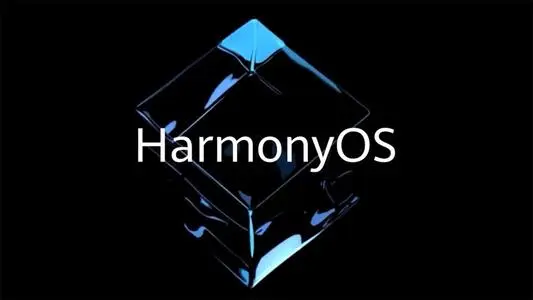
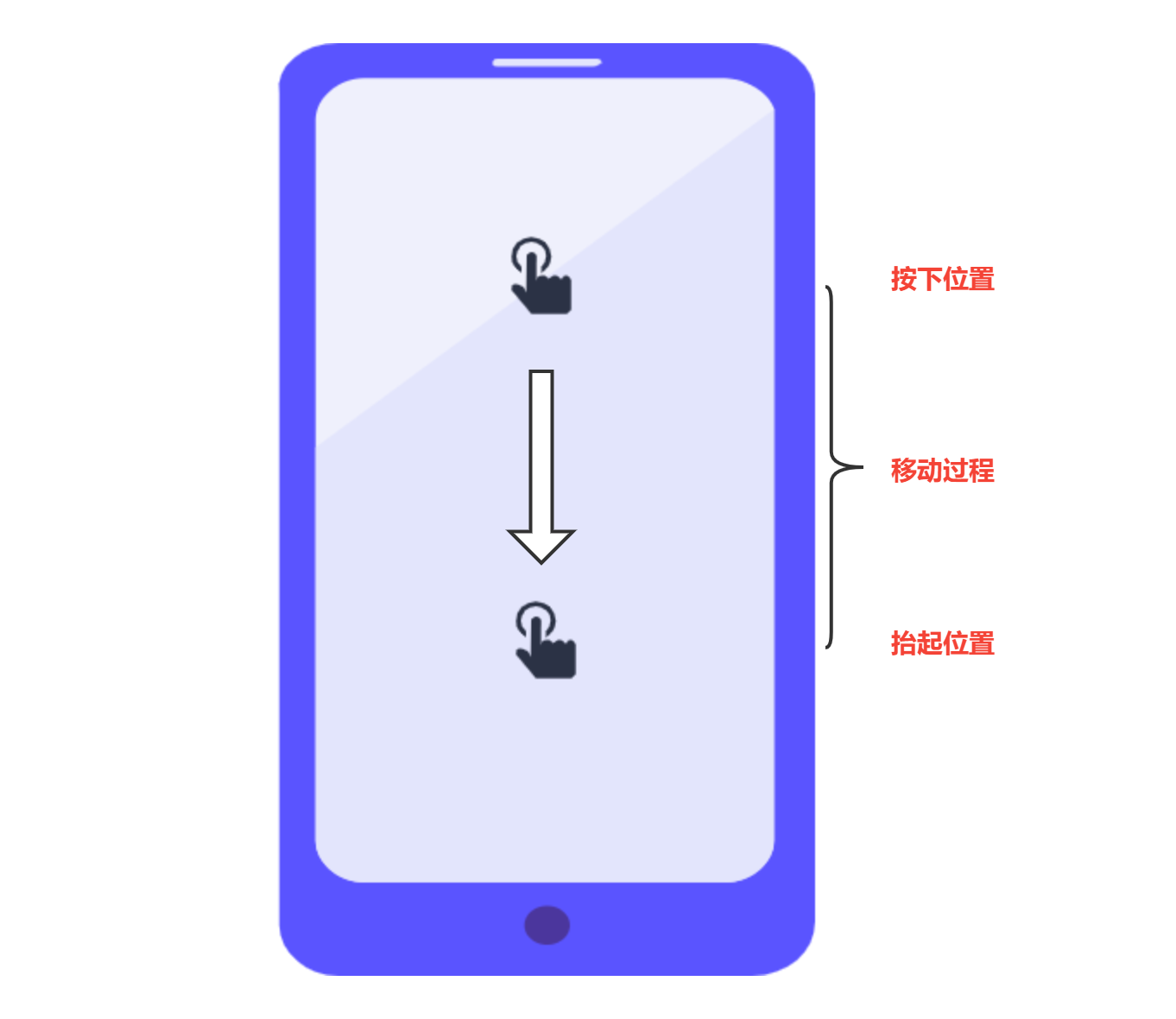
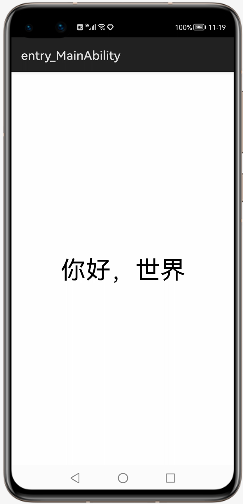
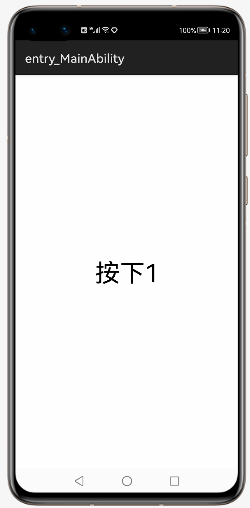
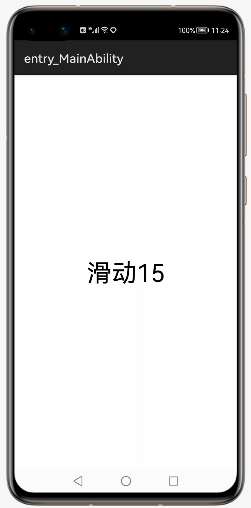
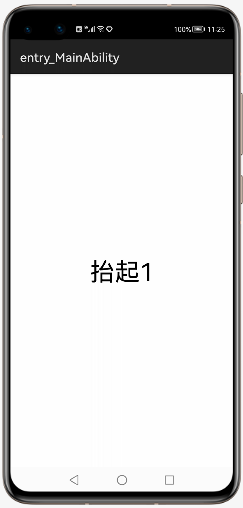












评论